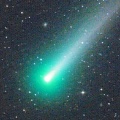
|
It brightened up to 5.1 mag in the morning sky (Dec. 12, Carlos Labordena). Then it brightened up to 3 mag in outburst on Dec. 14. Now it is bright as 3.4 mag (Dec. 16, Juan Jose Gonzalez). It turns to be observable in the evening low sky after this. It stays 3-5 mag in December. It stays observable until early January in the Northern Hemisphere, or until late January in the Southern Hemisphere. In the Southern Hemisphere, it becomes observable in the morning sky after late February.
Date(TT) R.A. (2000) Decl. Delta r Elong. m1 Best Time(A, h)
Dec. 18 19 39.38 -25 21.6 0.324 0.709 26 4.6 18:21 ( 55, 3)
Dec. 25 21 5.35 -33 23.5 0.566 0.648 38 5.4 18:25 ( 42, 5)
|

|
Now it is very bright as 8.9 mag (Dec. 4, Marco Goiato). It stays 9 mag until January, and it is observable in good condition. A very long dust trail is detected.
Date(TT) R.A. (2000) Decl. Delta r Elong. m1 Best Time(A, h)
Dec. 18 9 1.83 27 44.0 0.447 1.339 135 8.9 3:16 ( 0, 83)
Dec. 25 9 2.04 28 9.1 0.461 1.377 141 9.0 2:49 ( 0, 83)
|
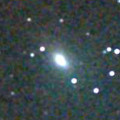
|
Now it is bright as 10.7 mag (Dec. 4, Marco Goiato). It stays bright as 9-10 mag until March. In the Southern Hemisphere, it is observable in excellent condition. It will be getting higher rapidly after this also in the Northren Hemisphere.
Date(TT) R.A. (2000) Decl. Delta r Elong. m1 Best Time(A, h)
Dec. 18 23 52.22 -27 43.6 1.176 1.415 81 9.6 18:21 ( 4, 28)
Dec. 25 0 4.66 -23 3.7 1.179 1.386 79 9.4 18:25 ( 9, 32)
|

|
Now it is 9.5 mag (Dec. 14, Chris Wyatt). It stays bright as 10 mag until spring for a long time. It stays observable in good condition for a long time. It locates somewhat low in the Southern Hemisphere,
Date(TT) R.A. (2000) Decl. Delta r Elong. m1 Best Time(A, h)
Dec. 18 7 26.76 35 15.2 2.647 3.560 154 9.9 1:42 (180, 90)
Dec. 25 7 19.90 34 8.9 2.609 3.557 161 9.8 1:08 ( 0, 89)
|
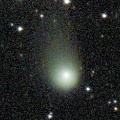
|
Now it is bright as 11.1 mag (Nov. 11, Osamu Miyazaki). It is expected to be observable at 5-6 mag for a long time from 2022 to 2023. In the Northern Hemisphere, it becomes extremely low temporarily in December, but it will be getting higher again after January. However, it is not observable at the high light from 2022 autumn to 2023 summer. In the Southern Hemisphere, it is not observable until February. But it will be observable in good condition at the high light.
Date(TT) R.A. (2000) Decl. Delta r Elong. m1 Best Time(A, h)
Dec. 18 17 46.32 14 28.5 5.257 4.520 37 11.2 18:21 (105, 4)
Dec. 25 17 51.93 13 50.7 5.197 4.458 37 11.1 5:35 (258, 7)
|
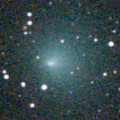
|
Now it is bright as 10.6 mag (Nov. 27, Marco Goiato). It is observable at 10 mag in good condition from October to December. In the Northern Hemisphere, it locates somewhat low at the high light.
Date(TT) R.A. (2000) Decl. Delta r Elong. m1 Best Time(A, h)
Dec. 18 23 19.87 -23 18.4 1.636 1.694 76 11.2 18:21 ( 13, 31)
Dec. 25 23 38.55 -21 24.0 1.730 1.739 74 11.6 18:25 ( 17, 32)
|
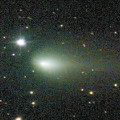
|
Now it is bright as 11.7 mag (Dec. 15, Osamu Miyazaki). It stays observable in good condition for a long time. But it will be fading gradually after this.
Date(TT) R.A. (2000) Decl. Delta r Elong. m1 Best Time(A, h)
Dec. 18 6 45.68 7 5.3 0.956 1.904 157 11.3 1:01 ( 0, 62)
Dec. 25 6 39.97 7 9.3 0.979 1.939 162 11.5 0:27 ( 0, 62)
|
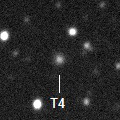
|
Now it is 13.4 mag (Dec. 14, Chris Wyatt). It is expected to brighten up to 11.5 mag in 2022. It stas observable in good condition for a long time.
Date(TT) R.A. (2000) Decl. Delta r Elong. m1 Best Time(A, h)
Dec. 18 11 53.44 -28 56.5 4.602 4.479 76 12.5 5:31 (351, 25)
Dec. 25 11 57.46 -29 14.5 4.489 4.461 82 12.5 5:35 (358, 26)
|
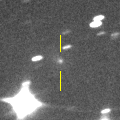
|
Now it is 14.7 mag (Nov. 24, Ken-ichi Kadota). Brightening rapidly. It is expected to be observable at 12-13 mag in good condition from December to February.
Date(TT) R.A. (2000) Decl. Delta r Elong. m1 Best Time(A, h)
Dec. 18 23 17.12 -7 54.5 0.715 1.123 81 12.8 18:21 ( 18, 46)
Dec. 25 23 39.82 -6 39.9 0.699 1.099 79 12.5 18:25 ( 22, 46)
|

|
In the Northern Hemisphere, it stays extremely low until spring. In the Southern Hemisphere, it will appear in the morning sky at 11 mag in late January, then it stays observable at 11 mag until June.
Date(TT) R.A. (2000) Decl. Delta r Elong. m1 Best Time(A, h)
Dec. 18 16 10.66 -18 2.6 2.667 1.794 22 12.8 5:31 (294, 3)
Dec. 25 16 30.66 -18 54.7 2.610 1.761 24 12.5 5:35 (297, 4)
|

|
Now it is 15.5 mag (Nov. 14, Ken-ichi Kadota). It will brighten up to 12 mag from winter to spring. In the Northern Hemisphere, it is appearing in the morning sky. In the Southern Hemisphere, it is not observable until January.
Date(TT) R.A. (2000) Decl. Delta r Elong. m1 Best Time(A, h)
Dec. 18 14 58.43 -11 12.0 2.334 1.715 40 13.3 5:31 (301, 20)
Dec. 25 15 17.69 -12 50.0 2.269 1.687 42 13.1 5:35 (304, 21)
|
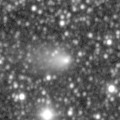
|
Major outburst occured on Oct. 17. Now it is very bright as 11.9 mag (Nov. 27, Toshihiko Ikemura, Hirohisa Sato). In the Southern Hemisphere, it becomes unobservable in late December. In the Northern Hemisphere, it stays observable until early February.
Date(TT) R.A. (2000) Decl. Delta r Elong. m1 Best Time(A, h)
Dec. 18 20 58.92 -15 52.1 2.339 1.811 46 13.2 18:21 ( 50, 22)
Dec. 25 21 17.49 -14 38.3 2.404 1.832 44 13.4 18:25 ( 53, 21)
|

|
It brightened very rapidly, and brightened up to 8.9 mag (Sept. 11, Chris Wyatt). Now it is fading. But it is bright as 10.4 mag still now (Nov. 13, Chris Wyatt). In the Southern Hemisphere, it stays observable after this while the comet will be fading. But it stays locating low. It is not observable after this in the Northern Hemisphere.
Date(TT) R.A. (2000) Decl. Delta r Elong. m1 Best Time(A, h)
Dec. 18 15 16.04 -51 59.0 2.527 1.883 39 13.2 5:31 (327,-11)
Dec. 25 15 37.44 -52 42.0 2.578 1.955 41 13.7 5:35 (329,-11)
|

|
Major outburst occured on Sept. 25, and it brightened up to 10.0 mag (Oct. 1, Toshihiko Ikemura, Hirohisa Sato). Now it is fading. But it is bright as 10.8 mag still now (Dec. 2, Toshihiko Ikemura, Hirohisa Sato).
Date(TT) R.A. (2000) Decl. Delta r Elong. m1 Best Time(A, h)
Dec. 18 4 28.17 31 30.5 4.998 5.940 161 13.3 22:39 ( 0, 87)
Dec. 25 4 24.81 31 16.2 5.038 5.942 154 13.3 22:08 ( 0, 86)
|

|
It brightened up to 9.5 mag in early summer (June 27, Marco Goiato). Now it is fading. It has already faded down to 12.7 mag (Nov. 22, Thomas Lehmann). Now it is not observable. In the Southern Hemisphere, it will appear in the morning sky at 15 mag in late February. In the Northern Hemisphere, it is not observable until June when the comet will fade down to 17 mag.
Date(TT) R.A. (2000) Decl. Delta r Elong. m1 Best Time(A, h)
Dec. 18 19 9.61 -33 12.5 3.661 2.769 21 13.5 18:21 ( 55, -8)
Dec. 25 19 24.69 -33 18.7 3.736 2.821 18 13.7 18:25 ( 56,-10)
|

|
It brightened up to 12.3 mag from spring to summer (June 15, Marco Goiato). Now it is fading. It has already faded down to 14.1 mag (Nov. 23, Ken-ichi Kadota). In the Northern Hemisphere, it is appearing in the morning sky. It is not observable until January in the Southern Hemisphere.
Date(TT) R.A. (2000) Decl. Delta r Elong. m1 Best Time(A, h)
Dec. 18 14 26.49 2 21.8 4.535 4.038 54 14.0 5:31 (296, 35)
Dec. 25 14 27.83 3 16.7 4.457 4.073 61 14.0 5:35 (302, 41)
|

|
Now it is 15.1 mag (Dec. 14, Chris Wyatt). It is expected to brighten up to 13 mag in 2022. In the Southern Hemisphere, it stays observable in good condition for a long time. In the Northern Hemisphere, it becomes observable temporarily in the extremely low sky in December. But it becomes unobservable again soon.
Date(TT) R.A. (2000) Decl. Delta r Elong. m1 Best Time(A, h)
Dec. 18 12 49.43 -47 59.2 3.942 3.584 61 14.5 5:31 (345, 4)
Dec. 25 12 48.38 -50 22.4 3.824 3.553 66 14.4 5:35 (350, 4)
|

|
Now it is 13.1 mag (Nov. 27, Toshihiko Ikemura, Hirohisa Sato). It stays 13-14 mag unil December, and it is observable in excellent condition.
Date(TT) R.A. (2000) Decl. Delta r Elong. m1 Best Time(A, h)
Dec. 18 1 14.54 0 23.9 1.107 1.727 111 14.5 19:27 ( 0, 56)
Dec. 25 1 26.15 1 38.7 1.175 1.742 107 14.7 19:11 ( 0, 57)
|
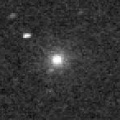
|
It was observed at 9-10 mag from late July to early August. Although it had been unobservable for a long time, it is appearing in the morning sky now.
Date(TT) R.A. (2000) Decl. Delta r Elong. m1 Best Time(A, h)
Dec. 18 15 33.65 -19 48.7 3.037 2.241 30 14.9 5:31 (301, 8)
Dec. 25 15 43.91 -20 59.7 3.074 2.332 34 15.1 5:35 (306, 11)
|
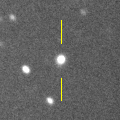
|
Now it is 14.1 mag (Nov. 28, Toshihiko Ikemura, Hirohisa Sato). It is expected to brighten up to 10 mag in 2023. In the Northern Hemisphere, it stays observable in good condition until 2023 autumn. In the Southern Hemipshere, it stays unobservable until 2023 summer.
Date(TT) R.A. (2000) Decl. Delta r Elong. m1 Best Time(A, h)
Dec. 18 13 4.38 38 52.2 5.521 5.607 89 15.2 5:31 (252, 68)
Dec. 25 13 5.86 40 2.8 5.369 5.551 95 15.1 5:35 (247, 74)
|

|
Now it is 15.8 mag (Oct. 4, Thomas Lehmann). Now it is not observable. It will appear in the morning sky at 15 mag in January. Then it will brighten up to 13 mag in 2022 summer.
Date(TT) R.A. (2000) Decl. Delta r Elong. m1 Best Time(A, h)
Dec. 18 16 20.05 -21 43.6 4.110 3.197 19 15.2 5:31 (296, -1)
Dec. 25 16 31.12 -22 18.2 4.063 3.186 23 15.1 5:35 (299, 2)
|

|
It brightened rapidly. Now it is 15.6 mag (Nov. 28, Toshihiko Ikemura, Hirohisa Sato). It is observable at 15 mag in excellent condition in winter.
Date(TT) R.A. (2000) Decl. Delta r Elong. m1 Best Time(A, h)
Dec. 18 8 39.76 16 46.6 1.664 2.484 138 15.1 2:54 ( 0, 72)
Dec. 25 8 36.89 16 15.6 1.617 2.491 145 15.1 2:24 ( 0, 71)
|

|
Now it is 16.1 mag (Nov. 22, Thomas Lehmann). It will brighten up to 12.5 mag in 2022 summer. In the Southern Hemisphere, it stays observable in excellent condition for a long time. In the Northern Hemisphere, it is not observable until August.
Date(TT) R.A. (2000) Decl. Delta r Elong. m1 Best Time(A, h)
Dec. 18 22 25.51 -68 1.1 4.346 3.967 61 15.2 18:21 ( 10,-15)
Dec. 25 22 21.36 -66 27.1 4.363 3.924 57 15.1 18:25 ( 14,-15)
|
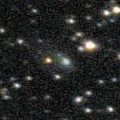
|
Now it is 14.9 mag (Nov. 28, Thomas Lehmann). It is expected to brighten up to 11 mag from spring to summer in 2022. In the Southen Hemisphere, it is not observable until February, but it stays observable in good condition for a long time after that. In the Northern Hemisphere, it is hardly observable after this.
Date(TT) R.A. (2000) Decl. Delta r Elong. m1 Best Time(A, h)
Dec. 18 19 4.67 -4 41.7 3.638 2.799 27 15.3 18:21 ( 78, 9)
Dec. 25 19 10.37 -5 59.6 3.624 2.738 22 15.2 18:25 ( 81, 3)
|

|
Now it is 15.9 mag (Nov. 17, A. Diepvens). It is expected to brighten up to 11 mag in 2023. In the Northern Hemisphere, it stays observable in good condition for a long time, although it became low temporarily in November. It is not observable in the Southern Hemisphere.
Date(TT) R.A. (2000) Decl. Delta r Elong. m1 Best Time(A, h)
Dec. 18 16 30.63 30 55.1 5.906 5.433 56 15.2 5:31 (249, 26)
Dec. 25 16 33.32 30 54.6 5.825 5.391 59 15.2 5:35 (252, 31)
|

|
Now it is 15.4 mag (Dec. 3, Toshihiko Ikemura, Hirohisa Sato). It will brighten rapidly, and it will be observable at 13.5 mag in good condition from winter to spring.
Date(TT) R.A. (2000) Decl. Delta r Elong. m1 Best Time(A, h)
Dec. 18 10 5.65 16 31.3 2.004 2.617 118 15.5 4:20 ( 0, 71)
Dec. 25 10 8.02 16 28.0 1.904 2.594 124 15.2 3:55 ( 0, 71)
|

|
Now it is 15.9 mag (Oct. 8, Thomas Lehmann). It stays at 14-15 mag for a long time from 2021 to 2022. It is not observable from November to January.
Date(TT) R.A. (2000) Decl. Delta r Elong. m1 Best Time(A, h)
Dec. 18 16 55.17 -27 27.6 5.966 5.005 11 15.4 5:31 (296,-11)
Dec. 25 16 58.93 -28 16.6 5.938 5.009 17 15.4 5:35 (300, -7)
|

|
Now it is 15.2 mag (Nov. 29, Toshihiko Ikemura, Hirohisa Sato). It will be fading after this. In the Southern Hemisphere, it stays observable in good condition for a long time. It locates low in the Northern Hemisphere.
Date(TT) R.A. (2000) Decl. Delta r Elong. m1 Best Time(A, h)
Dec. 18 22 32.32 -17 28.8 5.146 4.855 67 15.7 18:21 ( 28, 33)
Dec. 25 22 35.58 -16 20.5 5.272 4.881 61 15.8 18:25 ( 35, 31)
|
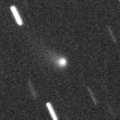
|
Now it is 15.5 mag (Dec. 4, Toshihiko Ikemura, Hirohisa Sato). In the Northern Hemisphere, it stays observable at 15-16 mag for a long time until early 2022. It is appearing in the morning sky also in the Southern Hemisphere.
Date(TT) R.A. (2000) Decl. Delta r Elong. m1 Best Time(A, h)
Dec. 18 13 19.48 15 41.1 3.338 3.229 75 15.8 5:31 (298, 56)
Dec. 25 13 18.34 14 57.6 3.249 3.255 81 15.7 5:35 (309, 61)
|

|
Now it is 15.1 mag (Nov. 10, Ken-ichi Kadota). It will be fading after this. In the Northern Hemisphere, it stays observable in good condition for a long time, although it became extremely low temporarily in November. In the Southern Hemisphere, it is not observable until late January.
Date(TT) R.A. (2000) Decl. Delta r Elong. m1 Best Time(A, h)
Dec. 18 16 13.11 18 10.8 3.034 2.469 46 15.8 5:31 (264, 23)
Dec. 25 16 13.57 18 56.1 2.990 2.498 51 15.8 5:35 (267, 30)
|

|
Now it is 15 mag (Oct. 31, Giuseppe Pappa). It will be fading slowly after this. In the Southern Hemisphere, it stays observable in good condition for a long time. In the Northern Hemisphere, it is not observable until July.
Date(TT) R.A. (2000) Decl. Delta r Elong. m1 Best Time(A, h)
Dec. 18 22 50.68 -58 26.5 4.277 3.938 63 15.8 18:21 ( 10, -5)
Dec. 25 23 0.48 -56 24.7 4.352 3.964 60 15.9 18:25 ( 14, -4)
|
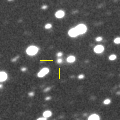
|
First return of a new periodic comet observed at 16 mag from 2003 to 2004. Now it is 16.0 mag (Nov. 27, Toshihiko Ikemura, Hirohisa Sato). It stays 16 mag until March, and it stays observable in excellent condition.
Date(TT) R.A. (2000) Decl. Delta r Elong. m1 Best Time(A, h)
Dec. 18 6 26.29 2 3.4 3.018 3.938 156 15.8 0:41 ( 0, 57)
Dec. 25 6 22.06 2 38.6 3.004 3.938 159 15.8 0:09 ( 0, 58)
|
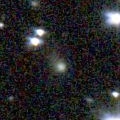
|
Now it is 16.0 mag (Nov. 5, Ken-ichi Kadota). It is expected to brighten up to 11 mag in 2023. In the Northern Hemisphere, it is observable only until November in 2022. In the Southern Hemisphere, it is not observable until February. But it will be observable in good condition at the high light.
Date(TT) R.A. (2000) Decl. Delta r Elong. m1 Best Time(A, h)
Dec. 18 18 6.93 19 44.5 6.240 5.568 43 15.9 18:21 (107, 11)
Dec. 25 18 11.77 19 10.6 6.204 5.520 42 15.9 5:35 (251, 6)
|

|
Now it is 15.4 mag (Nov. 21, ATLAS-MLO, Mauna Loa). It will be fading slowly after this. It will be unobservable in December.
Date(TT) R.A. (2000) Decl. Delta r Elong. m1 Best Time(A, h)
Dec. 18 20 43.98 -29 48.4 3.939 3.259 40 15.9 18:21 ( 43, 9)
Dec. 25 20 54.72 -29 7.7 4.014 3.275 36 15.9 18:25 ( 47, 7)
|
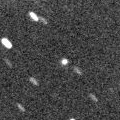
|
Now it is 16.9 mag (Dec. 1, Toshihiko Ikemura, Hirohisa Sato). It is expected to brighten up to 4.5 mag in 2022 April. However, it is not observable at the high light. In the Northern Hemisphere, it stays observable until early February when it brightens up to 14 mag. Then it will appear at 6 mag in mid May, and it stays observable in good condition after that while the comet will be fading. In the Southern Hemisphere, it stays observable until December when it brightens up to 16 mag. But after that, it is not observable until 2022 August.
Date(TT) R.A. (2000) Decl. Delta r Elong. m1 Best Time(A, h)
Dec. 18 22 4.07 4 57.7 2.645 2.482 69 16.1 18:21 ( 51, 48)
Dec. 25 22 8.93 3 59.7 2.649 2.379 63 15.9 18:25 ( 57, 43)
|

|
Brightened rapidly. Now it is 15.7 mag (Nov. 27, Toshihiko Ikemura, Hirohisa Sato). It is observable at 15.5-16 mag in good condition until winter.
Date(TT) R.A. (2000) Decl. Delta r Elong. m1 Best Time(A, h)
Dec. 18 2 2.67 11 37.3 3.133 3.802 126 15.9 20:14 ( 0, 67)
Dec. 25 2 3.39 11 23.5 3.222 3.805 119 15.9 19:47 ( 0, 66)
|
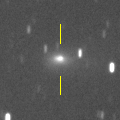
|
Now it is 15.7 mag (Nov. 28, Toshihiko Ikemura, Hirohisa Sato). It will be fading after this, and it will be fainter than 18 mag in February. It will be observable in excellent condition in the Northern Hemisphere. It locates somewhat low in the Southern Hemisphere.
Date(TT) R.A. (2000) Decl. Delta r Elong. m1 Best Time(A, h)
Dec. 18 7 16.99 38 33.0 0.982 1.918 154 16.0 1:32 (180, 87)
Dec. 25 7 10.43 39 32.3 0.999 1.952 159 16.3 0:58 (180, 86)
|
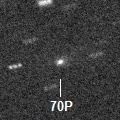
|
Now it is 16.7 mag (Dec. 11, Toshihiko Ikemura, Hirohisa Sato). It will brighten up to 15.5 mag, and will be observable in excellent condition in winter.
Date(TT) R.A. (2000) Decl. Delta r Elong. m1 Best Time(A, h)
Dec. 18 11 20.40 7 19.8 1.658 2.042 97 16.1 5:31 (358, 62)
Dec. 25 11 29.12 6 57.8 1.595 2.053 102 16.1 5:15 ( 0, 62)
|
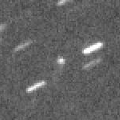
|
Now it is 16.8 mag (Nov. 28, Toshihiko Ikemura, Hirohisa Sato). It will brighten up to 16 mag in 2022. In the Northern Hemisphere, it stays observable in good condition for a long time. In the Southern Hemisphere, it is not observable until 2023.
Date(TT) R.A. (2000) Decl. Delta r Elong. m1 Best Time(A, h)
Dec. 18 10 39.46 82 11.5 3.408 3.930 115 16.1 4:54 (180, 43)
Dec. 25 10 58.99 85 0.6 3.395 3.912 114 16.1 4:46 (180, 40)
|
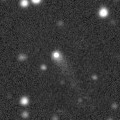
|
It stays observable at 16 mag from 2021 to 2022. Appearing in the morning sky in the Northern Hemisphere. In the Southern Hemisphere, it will appear in the morning sky in January.
Date(TT) R.A. (2000) Decl. Delta r Elong. m1 Best Time(A, h)
Dec. 18 15 31.51 8 15.5 5.388 4.743 44 16.3 5:31 (279, 26)
Dec. 25 15 37.51 9 5.4 5.321 4.751 50 16.3 5:35 (282, 32)
|
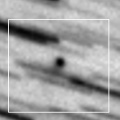
|
Now it is 17.1 mag (Nov. 27, Toshihiko Ikemura, Hirohisa Sato). It is expected to brighten up to 11 mag in 2022 summer. In the Northern Hemisphere, it stays observable in good condition until June when it brightens up to 11 mag. But it is not observable after the high light. In the Souther Hemisphere, it is not observable until 2022 October.
Date(TT) R.A. (2000) Decl. Delta r Elong. m1 Best Time(A, h)
Dec. 18 22 31.67 54 19.7 3.007 3.310 99 16.6 18:21 (146, 64)
Dec. 25 22 34.30 53 22.2 2.994 3.233 95 16.5 18:25 (140, 61)
|
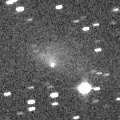
|
It brightened up to 10.1 mag in spring (Apr. 10, Marco Goiato). Now it is fading. It has already faded down to 16.3 mag (Dec. 10, Toshihiko Ikemura, Hirohisa Sato). It stays observable in good condition for a long time after this while the comet will fading.
Date(TT) R.A. (2000) Decl. Delta r Elong. m1 Best Time(A, h)
Dec. 18 3 54.09 6 11.1 1.881 2.770 148 16.5 22:05 ( 0, 61)
Dec. 25 3 49.57 6 39.7 1.972 2.810 141 16.8 21:33 ( 0, 62)
|
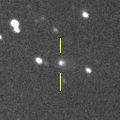
|
Now it is 15.8 mag (Nov. 27, Toshihiko Ikemura, Hirohisa Sato). It continues brightening even after the perihelion passage. It stays observable at 16-17 mag in good condition for a while.
Date(TT) R.A. (2000) Decl. Delta r Elong. m1 Best Time(A, h)
Dec. 18 4 36.34 -15 19.9 3.088 3.876 138 16.6 22:47 ( 0, 40)
Dec. 25 4 32.17 -14 37.8 3.141 3.895 134 16.7 22:15 ( 0, 40)
|

|
Now it is 16.4 mag (Nov. 14, F. Kugel, M. Audejean, J. Nicolas, J.-G. Bosch). It brightened rapidly. It stays 17 mag for a long time from 2021 to 2022. In the Southern Hemisphere, it stays observable in good condition for a long time. In the Northern Hemisphere, it will be observable only in extremely low sky from autumn to winter.
Date(TT) R.A. (2000) Decl. Delta r Elong. m1 Best Time(A, h)
Dec. 18 8 44.77 -41 23.7 5.035 5.338 102 16.7 2:59 ( 0, 14)
Dec. 25 8 37.29 -42 46.5 4.985 5.341 106 16.7 2:24 ( 0, 12)
|
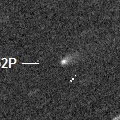
|
Now it is 16.7 mag (Dec. 3, Toshihiko Ikemura, Hirohisa Sato). It stays observable at 17 mag from autumn to winter.
Date(TT) R.A. (2000) Decl. Delta r Elong. m1 Best Time(A, h)
Dec. 18 12 14.37 -0 42.1 1.769 1.907 82 16.7 5:31 (337, 52)
Dec. 25 12 23.90 -2 22.0 1.720 1.931 86 16.8 5:35 (346, 52)
|

|
Now it is 16.5 mag (Nov. 29, Toshihiko Ikemura, Hirohisa Sato). Fading slowly. In the Northern Hemisphere, it stays observable in good condition for a long time. In the Southern Hemisphere, it is not observable after this.
Date(TT) R.A. (2000) Decl. Delta r Elong. m1 Best Time(A, h)
Dec. 18 18 41.37 47 12.9 9.231 8.973 71 16.7 18:21 (129, 30)
Dec. 25 18 45.04 47 26.3 9.249 8.980 71 16.8 18:25 (131, 26)
|
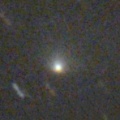
|
It brightened up to 14.5 mag in autumn (Oct. 1, Ken-ichi Kadota). Now it is fading. It has already faded down to 16.3 mag (Nov. 27, Toshihiko Ikemura, Hirohisa Sato). It will be fading rapidly after this. It will be fainter than 18 mag in February.
Date(TT) R.A. (2000) Decl. Delta r Elong. m1 Best Time(A, h)
Dec. 18 23 49.35 -12 16.0 2.235 2.390 86 16.8 18:21 ( 6, 43)
Dec. 25 23 58.37 -11 10.7 2.331 2.403 82 17.0 18:25 ( 14, 43)
|

|
It has not been observed yet in this return. It will brighten up to 16.5 mag in January. It locates low in the evening.
Date(TT) R.A. (2000) Decl. Delta r Elong. m1 Best Time(A, h)
Dec. 18 21 13.34 -25 42.0 1.611 1.196 47 17.1 18:21 ( 41, 17)
Dec. 25 21 39.26 -22 27.0 1.599 1.176 47 16.8 18:25 ( 44, 19)
|

|
Now it is 17.3 mag (Nov. 27, Toshihiko Ikemura, Hirohisa Sato). It stays observable in good condition for a long time. But it will be fading after this.
Date(TT) R.A. (2000) Decl. Delta r Elong. m1 Best Time(A, h)
Dec. 18 23 36.21 7 4.8 2.079 2.321 91 16.9 18:21 ( 17, 61)
Dec. 25 23 45.25 8 0.3 2.178 2.339 86 17.0 18:25 ( 28, 60)
|

|
First return of a new periodic comet which brightened up to 17 mag in 2011. Now it is 17.6 mag (Dec. 3, Toshihiko Ikemura, Hirohisa Sato). It stays observable at 17 mag in good condition until spring.
Date(TT) R.A. (2000) Decl. Delta r Elong. m1 Best Time(A, h)
Dec. 18 13 3.80 -2 10.0 1.585 1.562 70 16.9 5:31 (321, 45)
Dec. 25 13 21.10 -3 53.9 1.546 1.570 72 16.9 5:35 (326, 45)
|

|
Now it is 16.7 mag (Dec. 1, Toshihiko Ikemura, Hirohisa Sato). Fading slowly. It is not observable until April in the Southern Hemisphere.
Date(TT) R.A. (2000) Decl. Delta r Elong. m1 Best Time(A, h)
Dec. 18 21 35.83 20 5.9 6.527 6.285 71 17.0 18:21 ( 76, 53)
Dec. 25 21 38.05 19 15.5 6.643 6.301 65 17.1 18:25 ( 81, 47)
|

|
It was expected to brighten up to 14.5 mag from spring to summer. But actually, it is fainter than expected. Now it is 16.4 mag (Oct. 4, ATLAS-MLO, Mauna Loa). In the Southern Hemisphere, it stays observable for a long time. In the Northern Hemisphere, it is not observable after this.
Date(TT) R.A. (2000) Decl. Delta r Elong. m1 Best Time(A, h)
Dec. 18 11 58.72 -54 1.3 3.845 3.610 68 17.1 5:31 (354, 0)
Dec. 25 11 55.26 -54 22.7 3.808 3.657 73 17.1 5:35 (359, 0)
|
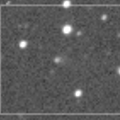
|
First return of a new periodic comet which brightened up to 17 mag in 2006. Now it is 17.2 mag (Nov. 23, ATLAS-HKO, Haleakala). It stays 17 mag from 2021 to 2022. In the Southern Hemisphere, it stays observable in good condition for a while. It locates extremely low in the Northern Hemisphere.
Date(TT) R.A. (2000) Decl. Delta r Elong. m1 Best Time(A, h)
Dec. 18 22 33.62 -41 44.2 3.446 3.111 62 17.1 18:21 ( 18, 10)
Dec. 25 22 42.72 -39 39.5 3.511 3.108 58 17.1 18:25 ( 23, 11)
|
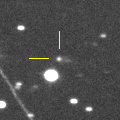
|
Now it is 16.7 mag (Nov. 27, Toshihiko Ikemura, Hirohisa Sato). It will brighten up to 14 mag in early 2023. It stays observable in good condition for a long time until spring.
Date(TT) R.A. (2000) Decl. Delta r Elong. m1 Best Time(A, h)
Dec. 18 4 30.41 2 40.9 4.152 5.048 152 17.1 22:41 ( 0, 58)
Dec. 25 4 27.19 2 55.3 4.150 5.004 147 17.1 22:11 ( 0, 58)
|
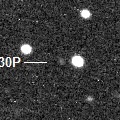
|
Now it is 18.5 mag (Nov. 28, Toshihiko Ikemura, Hirohisa Sato). It is expected to brighten up to 16.5-17 mag in winter. In its last apparition in 2015, it brightened up to 13 mag. But actually, it is fainter than this ephemeris recently.
Date(TT) R.A. (2000) Decl. Delta r Elong. m1 Best Time(A, h)
Dec. 18 22 56.36 -22 50.0 1.871 1.811 71 17.1 18:21 ( 19, 30)
Dec. 25 23 9.67 -21 3.5 1.900 1.778 67 17.1 18:25 ( 24, 30)
|
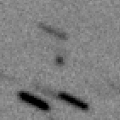
|
Now it is 17.5 mag (Nov. 27, Toshihiko Ikemura, Hirohisa Sato). It is observable at 17 mag from November to March. It is observable in good condition in the Northern Hemisphere, but it locates low in the Southern Hemisphere.
Date(TT) R.A. (2000) Decl. Delta r Elong. m1 Best Time(A, h)
Dec. 18 5 45.63 25 44.5 1.598 2.581 177 17.1 0:01 ( 0, 81)
Dec. 25 5 39.46 26 33.4 1.589 2.566 171 17.1 23:23 ( 0, 82)
|
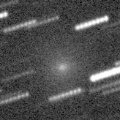
|
Bright new periodic comet. It brightened up to 12.7 mag in autumn (Oct. 9, Thomas Lehmann). It stays observable in good condition for a long time. But it is fading rapidly, and it will be fainter than 18 mag in January.
Date(TT) R.A. (2000) Decl. Delta r Elong. m1 Best Time(A, h)
Dec. 18 11 10.71 -9 6.5 1.404 1.764 93 17.2 5:24 ( 0, 46)
Dec. 25 11 15.12 -10 25.1 1.381 1.816 98 17.4 5:01 ( 0, 44)
|

|
Now it is 17.2 mag (Nov. 28, Toshihiko Ikemura, Hirohisa Sato). It stays 17-18 mag for a long time from 2021 to 2022. It is observable in excellent condition in the Northern Hemisphere, It locates somewhat low in the Southern Hemisphere.
Date(TT) R.A. (2000) Decl. Delta r Elong. m1 Best Time(A, h)
Dec. 18 3 32.41 32 30.2 4.542 5.417 149 17.2 21:43 ( 0, 88)
Dec. 25 3 22.41 31 51.7 4.606 5.409 141 17.2 21:06 ( 0, 87)
|
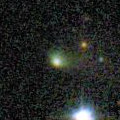
|
Now it is 16.9 mag (Nov. 27, Toshihiko Ikemura, Hirohisa Sato). It continued brightening even after the perihelion passage. But it will be fading after this, and it will be fainter than 18 mag in January.
Date(TT) R.A. (2000) Decl. Delta r Elong. m1 Best Time(A, h)
Dec. 18 1 1.93 -11 42.2 2.928 3.292 103 17.3 19:14 ( 0, 43)
Dec. 25 1 5.76 -10 52.6 3.061 3.333 97 17.5 18:50 ( 0, 44)
|
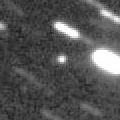
|
Now it is 16.3 mag (Dec. 2, Toshihiko Ikemura, Hirohisa Sato). In the Northern Hemisphere, it stays observable in good condition after this while the comet will be fading. In the Southern Hemisphere, it stays locating extremely low for a long time.
Date(TT) R.A. (2000) Decl. Delta r Elong. m1 Best Time(A, h)
Dec. 18 4 28.32 41 56.3 2.440 3.362 155 17.3 22:39 (180, 83)
Dec. 25 4 22.33 41 21.8 2.525 3.416 150 17.4 22:06 (180, 84)
|

|
It brightened very rapidly up to 10.7 mag in July (July 20, Osamu Miyazaki). Now it is fading. It has already faded down to 17.6 mag (Dec. 2, Toshihiko Ikemura, Hirohisa Sato). It stays observable in the morning sky for a long time.
Date(TT) R.A. (2000) Decl. Delta r Elong. m1 Best Time(A, h)
Dec. 18 8 51.39 28 55.7 1.375 2.203 137 17.3 3:06 ( 0, 84)
Dec. 25 8 43.05 29 39.5 1.382 2.266 146 17.5 2:30 ( 0, 85)
|

|
Now it is 17.8 mag (Aug. 4, ATLAS-HKO, Haleakala). It stays observable at 17-18 mag for a long time until 2024.
Date(TT) R.A. (2000) Decl. Delta r Elong. m1 Best Time(A, h)
Dec. 18 14 37.76 -5 44.3 9.532 8.901 47 17.4 5:31 (300, 28)
Dec. 25 14 38.50 -5 36.9 9.429 8.896 54 17.4 5:35 (307, 33)
|
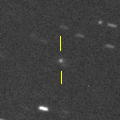
|
Now it is 17.8 mag (Nov. 25, ATLAS-HKO, Haleakala). It will brighten up to 11.5 mag in 2022 winter. It stays observable while the comet will be brightening slowly.
Date(TT) R.A. (2000) Decl. Delta r Elong. m1 Best Time(A, h)
Dec. 18 3 6.29 13 6.2 2.510 3.338 141 17.5 21:17 ( 0, 68)
Dec. 25 3 2.42 12 57.4 2.545 3.302 133 17.4 20:46 ( 0, 68)
|
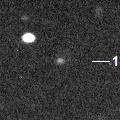
|
Now it is 16.9 mag (Dec. 1, Toshihiko Ikemura, Hirohisa Sato). It will brighten up to 15 mag in 2022 winter. It will be unobservable in February.
Date(TT) R.A. (2000) Decl. Delta r Elong. m1 Best Time(A, h)
Dec. 18 22 53.35 -14 28.3 2.937 2.816 73 17.4 18:21 ( 23, 38)
Dec. 25 23 0.86 -13 32.2 3.003 2.792 68 17.4 18:25 ( 30, 36)
|

|
Now it is 17.3 mag (Dec. 4, Toshihiko Ikemura, Hirohisa Sato). In the Northern Hemisphere, it stays observable for a long time while it is getting fainter slowly. In the Southern Hemisphere, it will never be observable again.
Date(TT) R.A. (2000) Decl. Delta r Elong. m1 Best Time(A, h)
Dec. 18 14 45.49 40 53.6 7.535 7.364 76 17.4 5:31 (246, 49)
Dec. 25 14 48.10 41 5.2 7.516 7.411 80 17.4 5:35 (247, 55)
|

|
It brightened up to 11.6 mag in winter (Feb. 18, Thomas Lehmann). Now it is fading. It has already faded down to 16.6 mag (Nov. 23, Thomas Lehmann). In the Southern Hemisphere, it stays observable in good condition after this. In the Northern Hemisphere, it will never be observable after this.
Date(TT) R.A. (2000) Decl. Delta r Elong. m1 Best Time(A, h)
Dec. 18 1 10.33 -59 53.7 4.736 4.669 80 17.4 19:21 ( 0, -5)
Dec. 25 1 7.14 -58 4.7 4.855 4.732 77 17.5 18:51 ( 0, -3)
|

|
Now it is 17.6 mag (Dec. 11, Toshihiko Ikemura, Hirohisa Sato). It was expected to brighten up to 15.5 mag in winter. But actually, it is fading even before the perihelion passage. In the Northern Hemisphere, it stays observable in good condition for a long time. It is not observable at all in the Southern Hemisphere.
Date(TT) R.A. (2000) Decl. Delta r Elong. m1 Best Time(A, h)
Dec. 18 16 18.55 66 31.8 2.796 2.985 91 17.4 5:31 (209, 38)
Dec. 25 16 24.65 68 19.4 2.742 2.975 93 17.4 5:35 (207, 40)
|

|
Now it is 18.7 mag (Oct. 14, Catalina Sky Survey). In the Northern Hemisphere, it stays observable at 17 mag in good condition from November to December. It locates low in the Southern Hemisphere.
Date(TT) R.A. (2000) Decl. Delta r Elong. m1 Best Time(A, h)
Dec. 18 2 7.64 29 53.7 1.306 2.096 131 17.5 20:18 ( 0, 85)
Dec. 25 1 57.71 27 42.8 1.349 2.055 122 17.6 19:41 ( 0, 83)
|
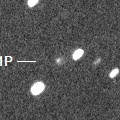
|
Now it is 17.1 mag (Nov. 28, Toshihiko Ikemura, Hirohisa Sato). It will be fainter than 18 mag in January.
Date(TT) R.A. (2000) Decl. Delta r Elong. m1 Best Time(A, h)
Dec. 18 9 17.21 20 59.2 1.592 2.353 130 17.6 3:32 ( 0, 76)
Dec. 25 9 13.29 20 13.0 1.563 2.389 138 17.6 3:00 ( 0, 75)
|

|
Now it is 17.2 mag (Dec. 10, Toshihiko Ikemura, Hirohisa Sato). It will be observable at 17 mag in good condition in spring.
Date(TT) R.A. (2000) Decl. Delta r Elong. m1 Best Time(A, h)
Dec. 18 13 21.54 -7 17.0 5.067 4.726 64 17.7 5:31 (319, 38)
Dec. 25 13 26.08 -7 45.7 4.964 4.724 70 17.7 5:35 (327, 41)
|
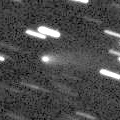
|
It brightened up to 15.2 mag in summer (Aug. 25, Ken-ichi Kadota). Now it is fading. It has already faded down to 17.5 mag (Nov. 28, Toshihiko Ikemura, Hirohisa Sato). It will be fainter than 18 mag in December. In the Northern Hemisphere, it stays observable in good condition for a long time. It locates extremely low in the Southern Hemisphere.
Date(TT) R.A. (2000) Decl. Delta r Elong. m1 Best Time(A, h)
Dec. 18 9 23.76 45 47.8 1.186 1.971 130 17.7 3:38 (180, 79)
Dec. 25 9 21.50 47 28.0 1.189 2.014 135 18.0 3:09 (180, 78)
|

|
Now it is 17.9 mag (Nov. 27, ATLAS-HKO, Haleakala). It is observable at 17 mag in good condition from winter to spring.
Date(TT) R.A. (2000) Decl. Delta r Elong. m1 Best Time(A, h)
Dec. 18 10 1.02 -27 26.8 2.039 2.407 99 17.9 4:15 ( 0, 27)
Dec. 25 10 6.90 -28 1.1 1.961 2.394 103 17.8 3:53 ( 0, 27)
|
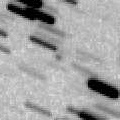
|
Now it is 18.5 mag (Nov. 27, Catalina Sky Survey). It is expected to brighten up to 13.5 mag from June to July. It is observable only in the Southern Hemisphere at the high light. In the Northern Hemisphere, it is observable only until March when it brightens up to 16.5 mag.
Date(TT) R.A. (2000) Decl. Delta r Elong. m1 Best Time(A, h)
Dec. 18 1 33.91 23 31.1 2.031 2.701 123 17.9 19:45 ( 0, 78)
Dec. 25 1 25.03 20 8.4 2.070 2.624 113 17.8 19:09 ( 0, 75)
|

|
Now it is 17.5 mag (Nov. 13, D. Buczynski). Fading slowly. In the Northern Hemisphere, it stays observable in good condition for a long time. It is not observable after this in the Southern Hemisphere.
Date(TT) R.A. (2000) Decl. Delta r Elong. m1 Best Time(A, h)
Dec. 18 16 48.37 48 50.8 6.432 6.219 73 17.8 5:31 (229, 30)
Dec. 25 16 52.12 49 26.2 6.437 6.256 75 17.9 5:35 (230, 35)
|

|
First return of a new periodic comet which brightened up to 16.5 mag in 1997. It has not been observed yet in this return. It is expected to be observable at 17 mag in good condition from January to March. But actually, it is not detected, fainter than 21.5 mag (Nov. 29, Takaaki Oribe).
Date(TT) R.A. (2000) Decl. Delta r Elong. m1 Best Time(A, h)
Dec. 18 8 57.33 29 27.5 1.490 2.304 136 18.0 3:12 ( 0, 84)
Dec. 25 8 58.35 29 11.0 1.411 2.273 142 17.9 2:45 ( 0, 84)
|
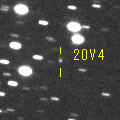
|
Now it is 17.7 mag (Dec. 2, Toshihiko Ikemura, Hirohisa Sato). It is observable at 18 mag in good condition in winter.
Date(TT) R.A. (2000) Decl. Delta r Elong. m1 Best Time(A, h)
Dec. 18 8 4.75 3 6.7 4.413 5.207 140 17.9 2:19 ( 0, 58)
Dec. 25 8 2.49 3 1.0 4.362 5.212 146 17.9 1:49 ( 0, 58)
|
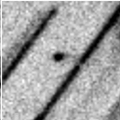
|
Now it is 17.6 mag (Nov. 27, Toshihiko Ikemura, Hirohisa Sato). It is observable at 17-18 mag in good condition from November to December.
Date(TT) R.A. (2000) Decl. Delta r Elong. m1 Best Time(A, h)
Dec. 18 4 10.21 21 33.3 1.003 1.953 158 17.9 22:20 ( 0, 77)
Dec. 25 3 48.84 25 57.8 1.070 1.970 147 18.1 21:31 ( 0, 81)
|
|
![]()
 193P/LINEAR-NEAT
193P/LINEAR-NEAT 430P/2021 Q2 ( Scotti )
430P/2021 Q2 ( Scotti ) C/2019 T3 ( ATLAS )
C/2019 T3 ( ATLAS ) C/2019 T2 ( Lemmon )
C/2019 T2 ( Lemmon ) 422P/2021 L1 ( Christensen )
422P/2021 L1 ( Christensen ) C/2020 S4 ( PanSTARRS )
C/2020 S4 ( PanSTARRS ) 230P/LINEAR
230P/LINEAR 274P/Tombaugh-Tenagra
274P/Tombaugh-Tenagra P/2021 Q5 ( ATLAS )
P/2021 Q5 ( ATLAS ) C/2020 U4 ( PanSTARRS )
C/2020 U4 ( PanSTARRS ) C/2021 K1 ( ATLAS )
C/2021 K1 ( ATLAS ) 28P/Neujmin 1
28P/Neujmin 1 15P/Finlay
15P/Finlay C/2020 F2 ( ATLAS )
C/2020 F2 ( ATLAS ) 81P/Wild 2
81P/Wild 2 119P/Parker-Hartley
119P/Parker-Hartley C/2018 N2 ( ASASSN )
C/2018 N2 ( ASASSN ) C/2019 N1 ( ATLAS )
C/2019 N1 ( ATLAS ) C/2021 D2 ( ZTF )
C/2021 D2 ( ZTF ) (3200) Phaethon
(3200) Phaethon 241P/LINEAR
241P/LINEAR 99P/Kowal 1
99P/Kowal 1 106P/Schuster
106P/Schuster C/2021 U5 ( Catalina )
C/2021 U5 ( Catalina ) C/2021 T2 ( Fuls )
C/2021 T2 ( Fuls ) C/2019 K7 ( Smith )
C/2019 K7 ( Smith ) P/1997 B1 ( Kobayashi )
P/1997 B1 ( Kobayashi ) P/2020 V4 ( Rankin )
P/2020 V4 ( Rankin ) P/2021 U3 ( Attard-Maury )
P/2021 U3 ( Attard-Maury )![]()








































































